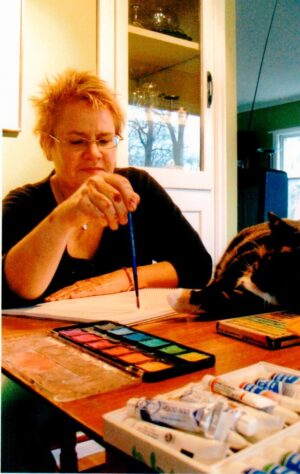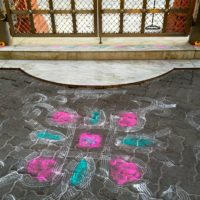Make Art. Cats Do
It’s winter in Iowa. An odd winter, but winter nonetheless. No snow to speak of; temperatures vacillating wildly from single digits to 40s and 50s. Yesterday an ice storm hit, but today temperatures in the 30s have melted it all away. No winter wonderland for us; we’re yearning for sunshine or snow to color gray winter days. I’m not the only one in the house with cabin fever.
 The cats have started doing art projects. This morning Rosy created the slipper piece, artfully arranging one of her catnip toys in my sheepskin slipper on the carpet by the front door.
The cats have started doing art projects. This morning Rosy created the slipper piece, artfully arranging one of her catnip toys in my sheepskin slipper on the carpet by the front door.
 Several days ago my daughter sent me a photo of her cat Silvia’s work in her food bowl.
Several days ago my daughter sent me a photo of her cat Silvia’s work in her food bowl.
Tater continues to refine a fiber piece on the arm of our favorite brocade chair, in spite of consistent and considerable discouragement. Art Critics!
I have a book called Why Cats Paint: A theory of feline aesthetics. I tried to get my cat Bitsy to paint a number of years ago, with limited success. Cats are famously independent after all.
 She did check out the pastels and help me watercolor. I’m pretty sure I have some samples of her work tucked away in my drawer for refrigerator-quality projects. But now that Silvia and Rosy are showing real promise, I will definitely be organizing some cat-friendly studio space.
She did check out the pastels and help me watercolor. I’m pretty sure I have some samples of her work tucked away in my drawer for refrigerator-quality projects. But now that Silvia and Rosy are showing real promise, I will definitely be organizing some cat-friendly studio space.
If cats can make art, we certainly can! Get over any fear that you “can’t draw” or that you’re “not creative.” Get out that yarn, those beads and baubles, tissue paper, scissors and brushes. Clear away the clutter and paint your world. It may be winter, but we don’t have to be stuck with gray and white!

















